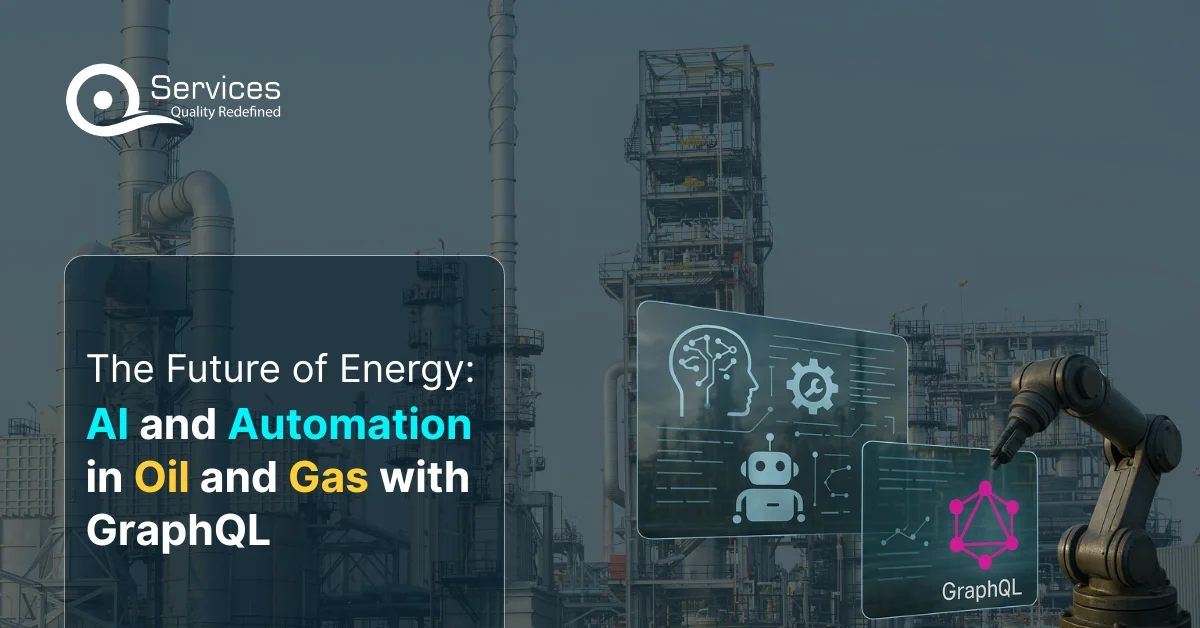
Rewards
.





CANADA
55 Village Center Place, Suite 307 Bldg 4287,
Mississauga ON L4Z 1V9, Canada
Certified Members:
.



Home » From Concept to Deployment: The Lifecycle of AI Development with Azure AI Foundry

Ever had a great AI idea but didn’t know where to start? That’s a common hurdle for many businesses. The truth is, creating AI solutions can be tricky—but it doesn’t have to be. With Azure AI Foundry, you’ve got everything you need to take your idea from concept to deployment in a simple, organized way.
Here’s the best part: Azure AI Foundry includes a whole suite of tools like Azure AI Studio, Prompt Flow, and Azure ML. These tools help you at every stage—whether you’re testing your model in Azure AI Studio, automating tasks with Prompt Flow, or ensuring smooth deployment with Azure ML.
Ready to see how these tools can help you go from an idea to a real working AI solution? Let’s dive in and break it down!
The conceptualization stage is where your AI ideas begin to take shape. Azure tools, especially Azure Prompt Flow, make this process easier.
Azure Prompt Flow helps you organize your ideas into actionable steps right from the start. Rather than diving into complex technical details, it gives you a clear structure to follow. Think of it as a map that guides you through your AI journey.
It keeps things organized and prevents you from feeling overwhelmed.
Microsoft Prompt Flow lets you customize the solution to fit your business goals. Whether you want to automate tasks or improve efficiency, it ensures your AI works the way you need it to.
Prompt Flow Microsoft automates the technical workflows in the conceptual phase, saving you time. No need to define every step manually—this tool does that for you.
It frees you up to focus on strategy, not repetitive tasks.
Now that you have your AI idea, it’s time to bring it to life. Prototyping is the stage where you start building and testing your model. Let’s look at how Azure AI Studio Documentation, Azure Machine Learning, and Azure Machine Learning Prompt Flow help you create and refine your AI prototype.
Azure AI Studio Documentation gives you all the steps you need to build AI models successfully. It covers setting up your workspace and understanding the basics of AI. Whether you’re a beginner or not, this guide makes it all simple.
Have you Ever felt overwhelmed with all the choices when starting something new?
This guide takes all your confusion out of the process.
With Azure Machine Learning (Azure ML), you can start testing your AI model. It lets you try out different models and see how they perform. You can experiment, tweak, and figure out what works best in a safe, controlled environment.
So, how do you usually test out new ideas?
With Azure Machine Learning, you can experiment without worrying about getting things wrong.
When your prototype is done, Azure Machine Learning Prompt Flow can take over some of the repetitive tasks which boosts the efficiency of your model and lets you work on other things, speeding up how quickly you can improve your prototype.
Here’s a thought:
What tasks slow you down the most when working on a project?
Prompt Flow automates tasks so you can focus on refining the bigger picture.
Prototyping is an integral part of AI development. With Azure AI Studio Documentation, Azure ML, and Azure ML Prompt Flow, you can build and improve your model without any hassle. These tools help make the process smoother and more efficient—so you can focus on bringing your AI idea to life.
Before you can train an AI model, you need to ensure your data is ready to go. But how do you make sure the data is clean, integrated, and set up for the best possible training? This is where Azure Flow comes in.
Azure Flow helps automate tasks, integrate data from various sources, and streamline the workflow so that you’re not manually doing all the tasks. Whether you’re pulling data from a database, cloud storage, or real-time feeds, It ensures that all the data in one place and ready to be used for training your model.
Once your data is all ready, the next significant step is training your AI model. But how do you make sure that you are getting the best results? Here are some practices to keep in mind:
Start with Clean Data: Your model can only be as good as the data it’s trained on. With Azure Flow, ensure your data is accurate and consistent before you start training. Clean data means fewer errors and better predictions down the line.
Use Enough Data: The more data you provide your model, the better it can learn. However, it’s important to strike a balance—using too little data can make your model inaccurate, but using too much data without proper training can also lead to overfitting.
Experiment with Different Algorithms: Azure do not want to stick you to one training approach. Azure provides various tools and algorithms that you can test with your data to find the one that works best.
Monitor and Adjust Your Model: Model training is not a “set it and forget it” task. It’s important to keep monitoring how well your model is performing, do it need adjustments or change. With Azure Flow, you can track your performance metrics and make adjustments without interrupting your workflow.
Get free Consultation and let us know your project idea to turn into an amazing digital product.
Now that you’ve built your own AI model, it’s time to refine it and that’s where PromptFlow comes in to make small adjustments and fine-tune your model, ensuring it performs well.
When it comes to AI, one round of training isn’t enough. Models need to be repeatedly tested and adjusted. PromptFlow makes this process streamline by allowing you to tweak your model’s settings, identify issues, and fix them instantly. The goal here is to get a model that works and performs at a high level consistently.
By using PromptFlow, you can go beyond the basic functionality of your model and focus on fine-tuning it which helps in identifying weak spots and make adjustments that lead to better predictions and overall model performance. The more you iterate, the more accurate and reliable your model becomes.
For example, let’s say your model is doing well, but it struggles with certain types of data—PromptFlow helps you figure out why, and what to change to make it better.
But what about Azure ML Prompt Flow?
Well, this tool takes iteration a step ahead providing automated workflows to fine-tune and optimize your models.
But, how do you know when your model is “good enough” to deploy?
The answer lies in continuous iteration. Keep improving the model until it performs at the level you need. With Azure ML Prompt Flow, this process becomes much quicker and efficient.
Let’s take an example, imagine that you’re building an AI model to predict customer buying behavior. You start with a basic version of the model, but after running several tests, you came to know that it doesn’t perform well in order to predicting purchases for new products. So, in that situation what helps you?
By iterating with PromptFlow, you can adjust the model’s parameters, introduce new data points, and can-do experiment with several algorithms, helping the model to work perfectly.
With your AI model fine-tuned and ready, the next step is turning it into a real-world solution. Shifting from prototype to production requires careful planning to ensure scalability and security. Azure AI Foundry provides the tools to simplify this crucial phase and make deployment seamless.
Deploying an AI model might sound complicated, but with Azure AI Foundry, it’s a structured and straightforward process. Here’s an easy and simple breakdown:
Prior to anything else, make sure your AI model is optimized and validated for production. Azure AI Foundry provides tools to check model compatibility and make necessary adjustments.
Use Azure AI Studio to configure the deployment environment. You can define the infrastructure requirements like compute resources and storage while ensuring all services are well-integrated.
Azure makes it easy to deploy your model through its platform. Once deployed, run a few tests to confirm everything works as expected. Think of this as a dress rehearsal before going live.
Even after deployment, your work isn’t done. Azure Flow and related tools can help you continuously monitor the model’s performance, making real-time adjustments where necessary.
The Azure AI Studio documentation guides you throughout the complete deployment journey, offering detailed instructions on:
Whenever you feel stuck, this documentation acts as a quick and reliable reference, so you don’t have to guess your way through.
Here are some tips to ensure a smooth transition from prototype to production:
Use Azure’s flexible infrastructure to design your deployment for future growth. Even if you’re starting small, plan for success by ensuring your solution can scale as needed.
With AI models managing sensitive data and security is non-negotiable. Azure’s built-in compliance and security features make it easy to protect your AI solutions without extra overhead.
Simulate real-world conditions to address and resolve issues before releasing your model to users.
Post-deployment, Azure Flow automates tasks, monitors workflows, and ensures your operations remain efficient and uninterrupted.
Let’s Talk: What’s Your Deployment Plan?
By following this Step-by-Step Guide to Deploying AI Solutions in Azure and using tools like Azure AI Studio documentation and Azure Flow, you can confidently bring your AI projects to life.
Managing AI projects can feel like juggling a million moving parts. But Azure AI Foundry makes it possible. It’s your partner in taking AI ideas from the drawing board to the real world.
Azure AI Foundry simplifies the entire lifecycle—breaking it down into clear, manageable steps. Whether you’re brainstorming, training models, or deploying your solution, it has your back. It helps you set clear goals, assign tasks, and stay on top of progress without getting lost in the weeds.
With tools like Azure Flow and Prompt Flow, you can keep tabs on every phase without need of much effort.
Let’s say you’re testing a model and it’s not quite hitting the mark. No stress. Prompt Flow makes it easy to tweak and refine workflows on the fly, without making you stuck in a trial-and-error loop. And Azure Flow? It takes care of the behind-the-scenes stuff, like automation and integration, so your team can focus on what really matters—getting that AI solution up and running.
At the end of the day, managing AI projects isn’t about doing it all perfectly—it’s about staying flexible, solving problems quickly, and keeping your eyes on the prize. Azure AI Foundry helps you do all that without overcomplicating things.
So, whether this is your first AI project or you’re scaling up for something big, Azure AI Foundry keeps the process smooth, efficient, and stress-free. Think of it as your secret weapon for AI success.
In the AI development lifecycle with Azure AI Foundry, deploying your AI model is a major achievement, but it’s only the first step toward success. It marks the beginning of maintaining performance, adapting to new challenges, and meeting diverse business needs.
Once your AI system is live, it starts working with real-world data, which can be different from the data it was trained on. Keeping an eye on its performance helps you:
This stage is about making sure your AI stays useful and doesn’t fall behind as things change.
Azure Flow is a great tool for keeping your AI system running smoothly after deployment. It can automatically tweak and optimize the AI model in real time. For instance, if the model starts making errors due to unexpected data, Azure Flow can step in to make adjustments right away. both time and effort.
Ask yourself:
Thinking about these questions really help you build a system that stays effective over time.
The AI development lifecycle with Azure AI Foundry includes tools that simplify this phase. It offers features like feedback loops and automatic retraining, so your AI model can keep improving without needing to be rebuilt from scratch.
With the pace of change in today’s world—markets shifting and customer preferences evolving—it’s key to keep your AI models flexible. Azure Flow and Azure AI Foundry help you make quick adjustments to keep your model performing optimally. Continuous monitoring and improvement turn your AI deployment into the start of long-term success, ensuring it stays effective and delivers measurable benefits.

Thanks to Azure AI Foundry, AI development has become much easier. With its user-friendly workflows and robust tools, businesses can now easily build, deploy, and improve AI solutions. This platform takes the complexity out of AI, making it simpler for companies to create solutions that actually make a difference in the real world.
The key stages include ideation, data collection, data preprocessing, model development, model training, model evaluation, deployment, and monitoring.
Azure AI Foundry offers tools like Azure Machine Learning Studio and Azure Cognitive Services to brainstorm and prototype AI solutions quickly.
It supports structured, unstructured, and semi-structured data, including text, images, audio, and video.
Data can be collected from various sources such as databases, APIs, IoT devices, and web scraping, and ingested using Azure Data Factory.
AI models can be integrated using APIs, SDKs, and Azure Logic Apps to enhance existing applications with AI capabilities.
Feedback from users and monitoring data helps identify areas for improvement and retrain models for better performance
Azure Machine Learning and Azure Databricks facilitate model retraining with updated data and improved algorithms.
Ethical considerations include fairness, transparency, accountability, and avoiding bias in AI models.
Common challenges include data quality issues, model overfitting, scalability, and integration with existing systems.
Azure AI Foundry provides comprehensive tools, best practices, and support to address challenges and streamline AI development.

Dynamics 365 CRM for Financial Services is a specialized version of Microsoft Dynamics 365 Customer Relationship Management (CRM) tailored specifically for the financial services industry. It is designed to help financial institutions, such as banks, insurance companies, investment firms, and wealth management organizations, manage their customer relationships, streamline operations, and enhance service delivery.

This blog is deeply immersed in automating workflow automation using Microsoft Power Automats and TypeScript. Consider practical applications, from improving integration of financial data and power automation and typescripts to reducing financial operational costs using power automation and typescripts, as well as types of best practices to ensure robust and scalable solutions.

The oil and gas industry has long been a cornerstone of the global economy, powering industries, transportation, and households. However, as the world shifts toward cleaner energy and greater efficiency, the sector faces unprecedented challenges and opportunities. The convergence of artificial intelligence (AI), automation, and modern data technologies like GraphQL is revolutionizing how this industry operates.
.





55 Village Center Place, Suite 307 Bldg 4287,
Mississauga ON L4Z 1V9, Canada
.




Founder and CEO

Chief Sales Officer

🎉 Thank you for your feedback! We appreciate it. 🙌